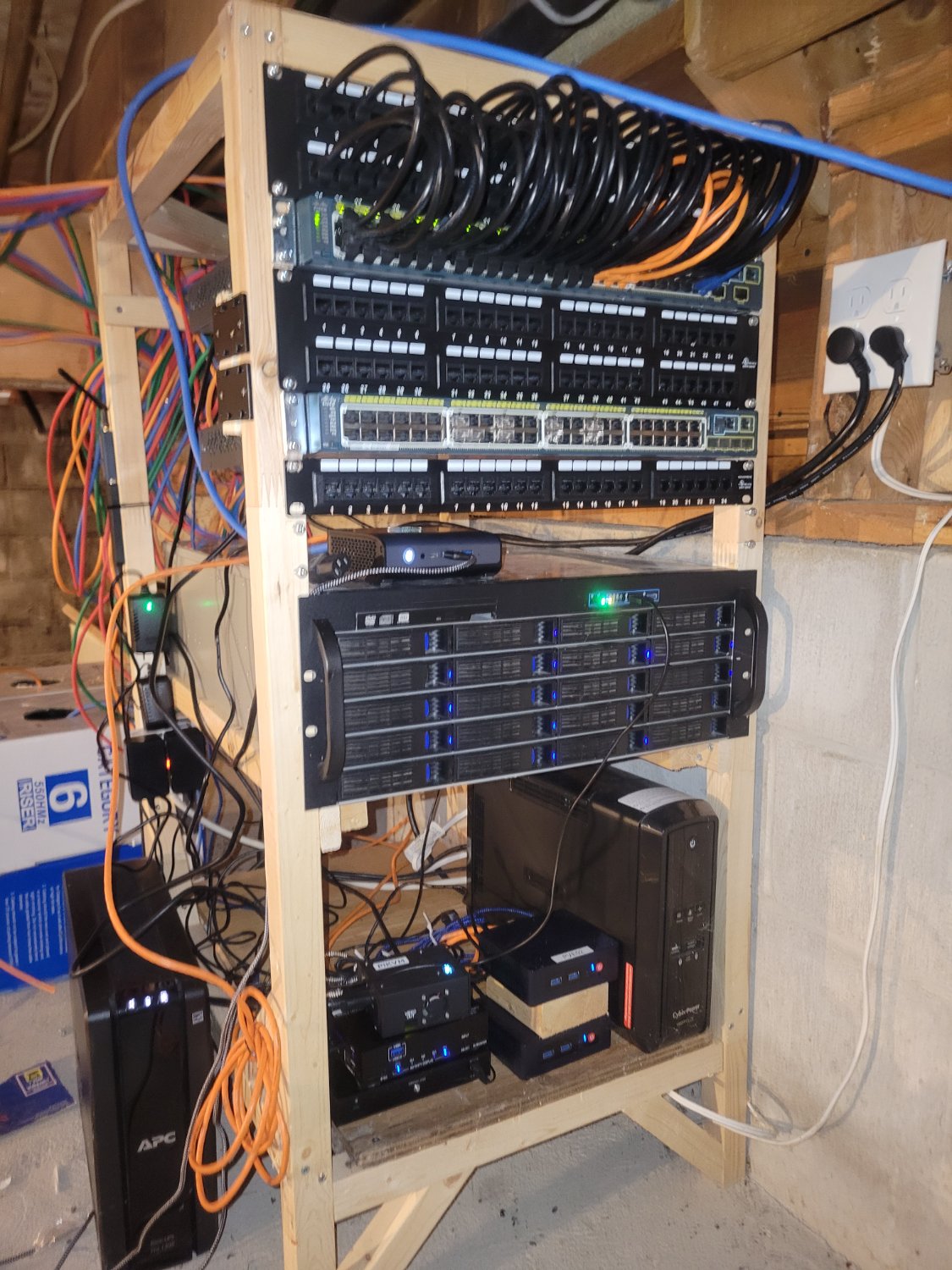

Really I think we are going to see an increase in jellyfin uptake given the changes which is great for that project


Really I think we are going to see an increase in jellyfin uptake given the changes which is great for that project


But if you don’t already have lifetime and are paying monthly or annually then that price is also almost doubling


Things like this maybe? I haven’t seen any performance days but it’s a cool project
If you go with your option A, you could virtualize the windows install and run it inside of the truenas or other os using qemu.
You would still need to have enough drives for a new array, but that was always going to be the situation


It’s just from my phone. I have all the notifications off from the original app
Proxmox backup server is my jam, great first party deduplicated incremental backups. You can also spin up more than 1 and sync between them


Once in a while discord signs me out and I have to do a bunch of extra sign-in steps on the official client. But otherwise I have discord, WhatsApp, Google voice, Google chat, Google messages (sms), Facebook, telegram, signal.
All the mautrix bridges are will made and robust


So, one thing that’s not clear here. Is the server and your desktop both at the same location? If they are I see no reason why you couldn’t just leave all the files on the server, have an NFS or Samba share then just stop it on the server and start it (over the network share) on your desktop. It would be functionally seamless, would require no effort to keep the files in sync, and would ensure your running things in the box you want.
Ha indeed, every room in the house is getting 2 faceplates (on roughly opposite sides of the room) with 4 Ethernet that runs each back to the server rack. Is every room having 8 runs right back to the switch excessive, you bet.
In my old place I had one faceplate with 2 ethernet, coax and phone to each room, but phone and coax is useless and I didn’t have enough Ethernet.

Top to Bottom:
Bottom area:
The access to the crawlspace isn’t great so the CrapRack tm had to be assembled in the crawlspace.


I agree with this, though I think a lot of people don’t differentiate between operating system containers like LXC provides and application containers like docker provides.
Just 3.3 cents per day seems pretty reasonable


Obligatory if you install HA on a raspberry Pi. Use the SSD option as you will wear out an SD card or usb key pretty quickly since those devices aren’t intended for constant writes from things like logging and generally don’t have any wear out leveling.


On Android I just started using kiwi browser a month or two ago it’s for android only but it’s chromium based and supports extensions which brings ublock and others to mobile.
https://play.google.com/store/apps/details?id=com.kiwibrowser.browser
I don’t know how slow the old one was, but if I send myself an SMS using the bridge it completes a round trip to the Telco and back in about 1 second
Have you tried the new SMS bridge that relies on gmessages?
https://github.com/mautrix/gmessages
If you have an Android phone you can use the Google SMS app:
https://play.google.com/store/apps/details?id=com.google.android.apps.messaging
Then you pair the app and bridge. It’s been pretty reliable since I started using this bridge, especially when compared to the previous bridge options.


Is there a reason you couldn’t use either use a self hosted or the public hosted copy of element or an Android/iOS app and connect it directly to the beeper synapse/dendrite server?
Their clients are just closed forks of element anyways.


To be fair, the client they provide to make bridging more accessible is proprietary, however you can fire up a fresh copy of element and connect it if you want and just use the text interface.
The clients are closed so that they have something to sell and profit. Not everyone can afford to give their time away for free.
Depending on what services you want to give access with, I have had great luck with an ultra cheap VPS
https://lowendbox.com/blog/1-vps-1-usd-vps-per-month/
Then I host my edge services on a container and use an ssh tunnel to the remote host which gives me an ipv4 and any port forward that I want.
For example I have my reverse proxy inside my network and my VPN server then I use a command like:
ssh -R 8080:localhost:80 public.example.com
Which would forward publicip:8080 to localhost:80
Read more here: https://www.ssh.com/academy/ssh/tunneling-example.
I use autossh to keep the tunnel alive at all times.
https://www.harding.motd.ca/autossh/
This is an ultra cheap way to get any ports you want and self host the whole thing. The remote VPS also doesn’t get any extra access to your local network and doesn’t initiate the connection so it doesn’t have credentials for your local network